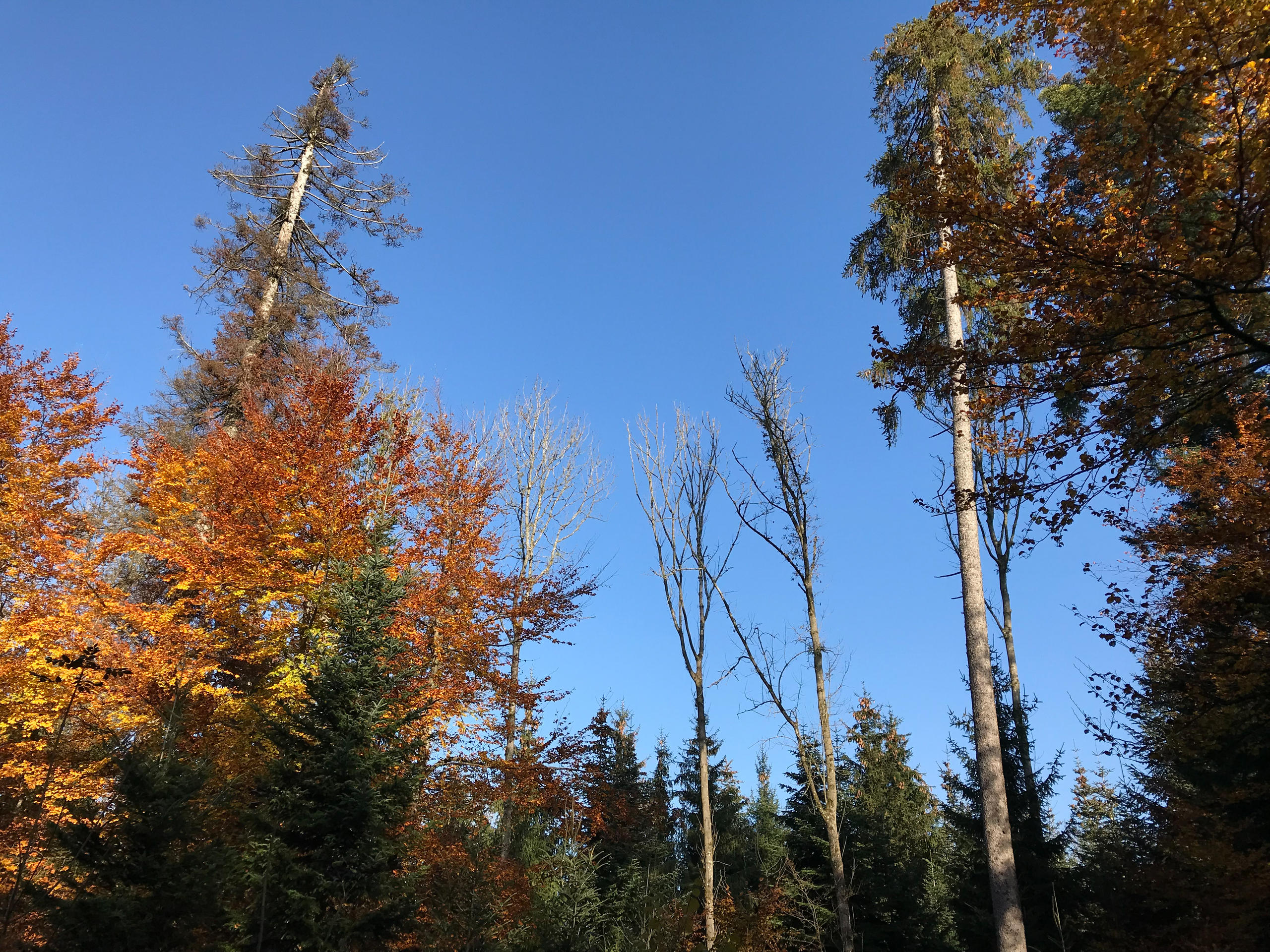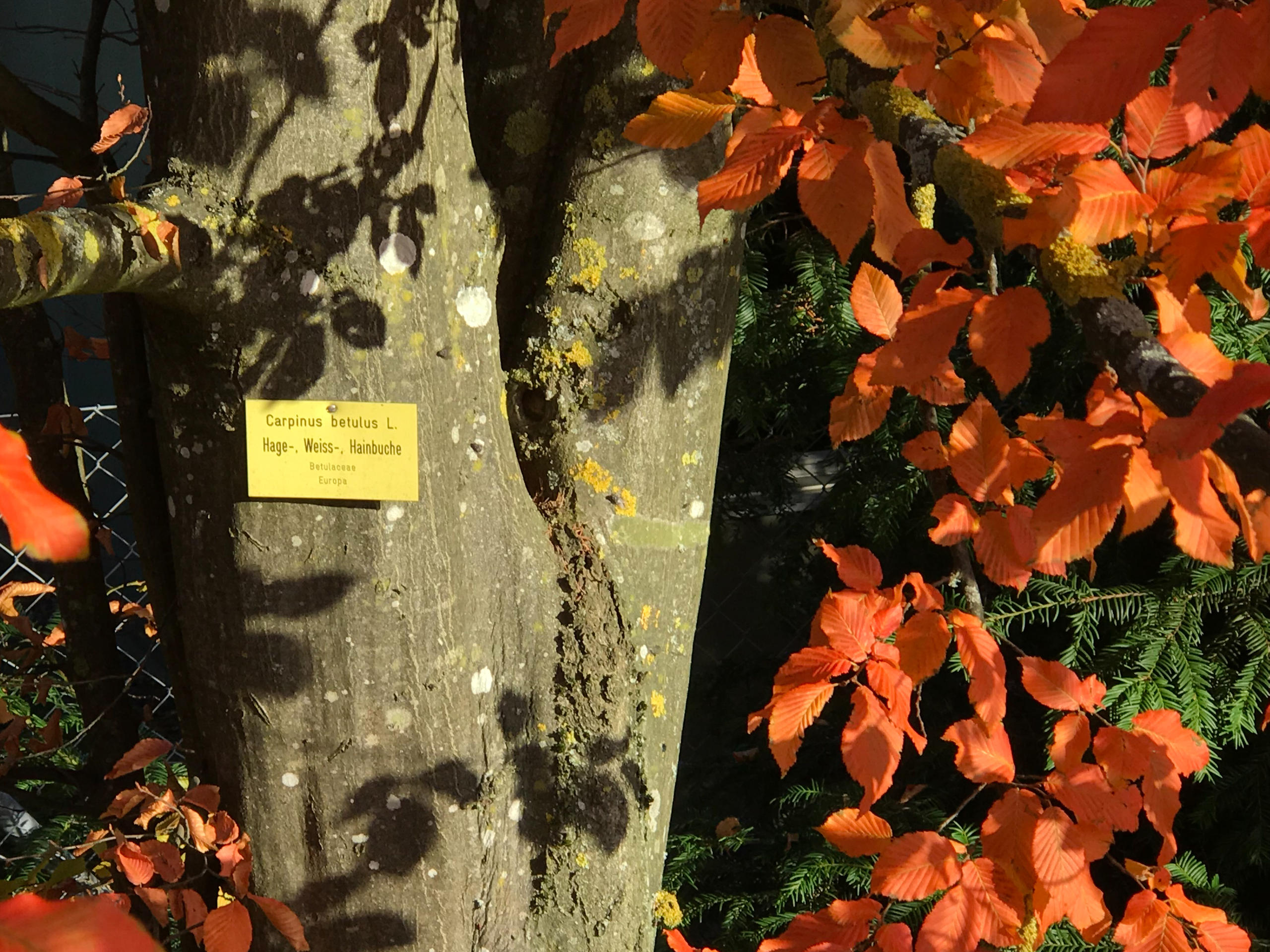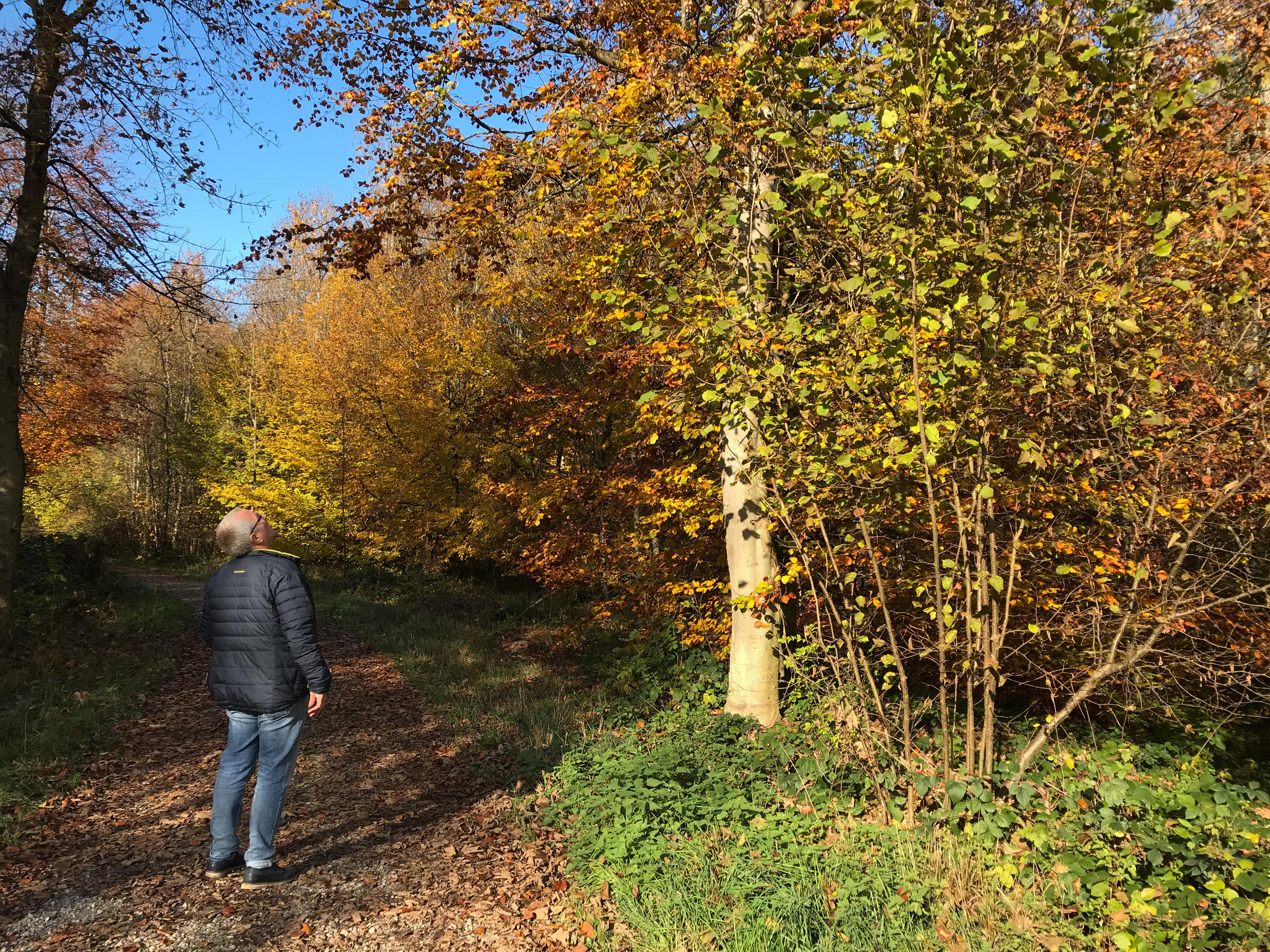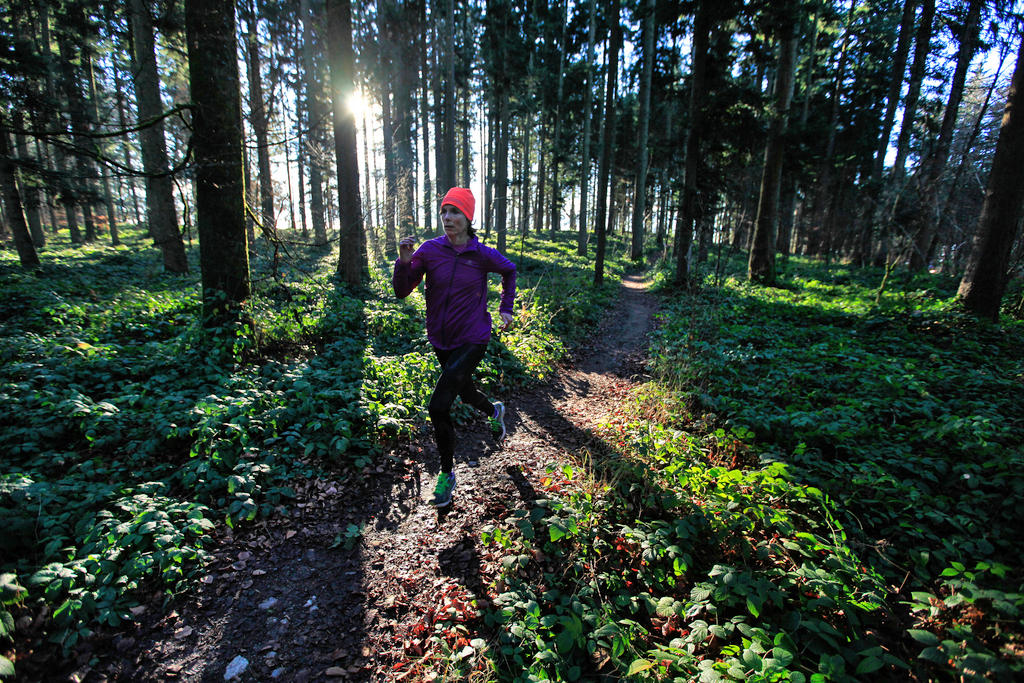Drought leaves mark on Swiss trees

As an unusually hot and dry year comes to an end, this autumn’s foliage seems more brilliant than ever. But how well equipped are Switzerland’s trees to survive the winter – not to mention a future that will likely bring more drought?
“Fantastic” is how forest dynamics ecologist Thomas Wohlgemuth describes the red, orange and golden leaves surrounding the Swiss Federal Institute for Forest, Snow and Landscape Research (WSL)External link in Birmensdorf near Zurich.
Colleague Valentin Queloz is also struck by the vibrance of the 2018 foliage. “I’ve never seen it turn such a bright red,” remarks the forest health and protection specialist, holding a reddish-orange hornbeam leaf plucked from WSL’s driveway.

Is the spectacle in spite of – or because of – the past summer’s extremely dry conditions?
“In principle I think it’s always the same. Foliage is more weather dependent,” points out Wohlgemuth, noting the season’s lack of fog and frost.
Defence mechanism
However, there are signs of stress suggesting problems that could ultimately kill some of the trees. The summer of 2018 was one of the hottest and driest in Swiss history.
“I can only remember something like this in 2003. I’m not an alarmist, but no year has been as dramatic as 2018,” says Wohlgemuth, who’s been working at WSL for 30 years. “This was the first year I asked my team to make a note of local CO2 levels during their travels abroad.”
During a walk through the forest adjacent to the WSL campus, he points out evidence of this summer’s drought in the form of a beech tree with twigs missing from its crown.

“Those twigs broke because they didn’t have enough water and probably dried out,” he explains. In Zurich as well as Basel, beech trees dropped leaves and limbs in mid-July; there was even a public service announcement warning hikers to watch out for falling branches.
Losing leaves can be a good survival strategy for a deciduous tree. Oak and lime leaves went straight from green to grey before dropping along Lake Walen in eastern Switzerland this summer.
“It seems like a defence mechanism,” says Queloz, whose team is monitoring forest health problems in Switzerland. But leaf drop only works for deciduous trees; for conifers, drought poses more of a hardship.
In the forest, Wohlgemuth points at a group of three silver firs, two of which are sporting dead crowns – identifiable by their desiccated red needles.
“We don’t know if this is because of bark beetles or a direct result of the drought,” admits the ecologist. What he does know is that all three were green and healthy-looking prior to last summer.
Future trees
Recovery depends on the availability of water over the next months.
“This year’s springtime drought reduced the growth or even caused partial or full mortality of many different tree species at low elevation. If precipitation is lacking early in the growing season, effects are more grave than after dry periods in the late growing season,” Wohlgemuth says. The custodians of Swiss forests are looking into what kinds of trees would be a good fit for the drier, hotter Switzerland forecast in the climate scenarios that Swiss researchers are expecting.
Originally from North America, Douglas firs are quite drought-resistant compared to the Norway spruce that is native to Switzerland.

“It’s considered a good ‘future tree’ that can be planted alongside silver fir and broad-leaved species like beech and contribute to a high biodiversity – which is generally considered better to survive future climates,” he says, gesturing to a specimen – not much taller than himself – which has been wrapped in chicken wire to ward off deer and other browsers.
But in terms of biodiversity, even a dead tree is a good tree.
“A disturbance in a forest means space for regeneration. The loss of dominant trees provides nutrients that are good for biodiversity,” points out Wohlgemuth.
Switzerland’s worst-ever drought was in 1540, when there was no rain between February and the end of the year.
“People were bathing in the River Rhine until December, and able to cross from one side to the other,” says Wohlgemuth.
The years 1911, 1921 and 1947 were also extremely dry, with a high level of beech tree die-back in the 1940s.
The all-time Swiss heat record of 41.5 Celsius (106.7 Fahrenheit) was set on August 11, 2003, in Grono, canton Graubünden.

In compliance with the JTI standards
More: SWI swissinfo.ch certified by the Journalism Trust Initiative














You can find an overview of ongoing debates with our journalists here . Please join us!
If you want to start a conversation about a topic raised in this article or want to report factual errors, email us at english@swissinfo.ch.